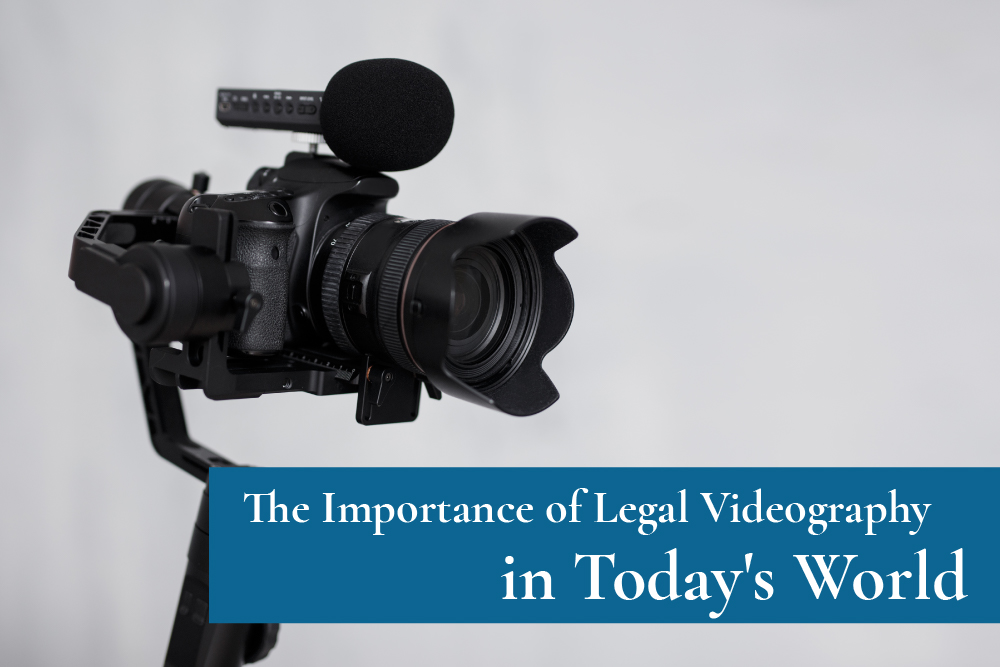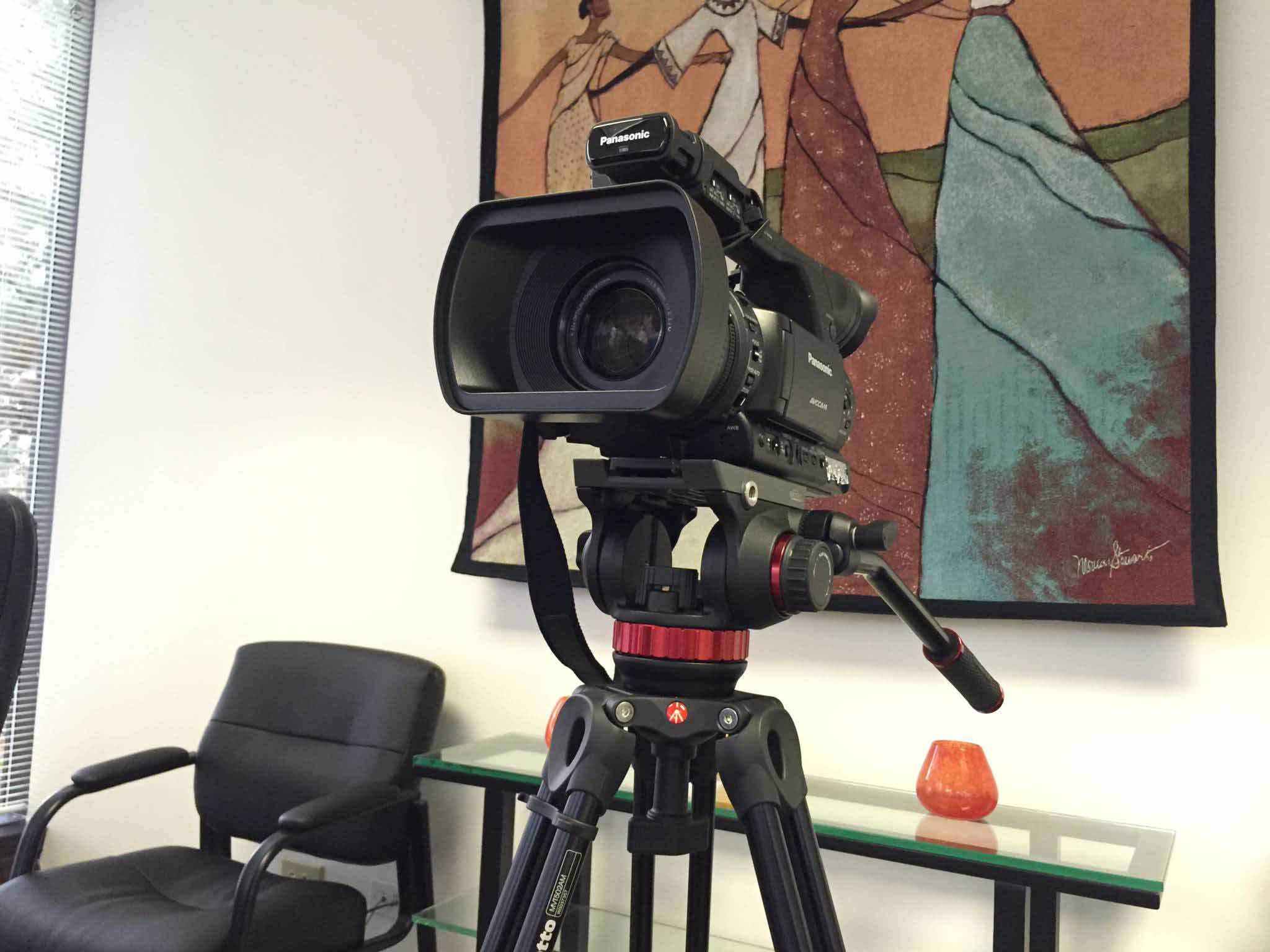The Function of Videography in Enhancing Legal Solutions
As the legal landscape remains to progress, the integration of videography into lawful solutions becomes a crucial advancement. This medium not just facilitates the precise documents of proof however also boosts the quality of witness testaments and intricate lawful arguments. The implications of utilizing videographic techniques prolong beyond mere documents; they influence situation methods and customer interactions significantly. However, the concern continues to be: just how can attorneys take advantage of these improvements to maximize campaigning for and boost judicial outcomes? Exploring this possible opens a conversation concerning the future of lawful methods.
Significance of Videography in Law

Additionally, videography facilitates reliable interaction in between attorneys, clients, and courts. It allows lawyers to present complicated details in a much more interesting manner, consequently aiding in the understanding of intricate legal concepts. This is particularly useful in cases including technical proof, where visual representation can clarify the issue at hand.
As an outcome, videography not only supports the legal procedure however likewise contributes to the overall effectiveness and efficiency of legal solutions. In a progressively electronic age, the assimilation of videography into lawful method continues to be essential for maintaining the criteria of justice and making sure fair lawful representation.
Applications forthcoming Presentation
Various applications of videography in proof discussion improve the performance of tests and legal proceedings. One substantial application is the recording of witness testaments, which can be played back throughout trials to supply a regular account of events. This not only aids in protecting the witness's temperament yet likewise ensures that the court obtains the information straight from the source, reducing the risk of false impression.
In addition, videography contributes in offering physical proof. High-def video clip can display the details of proof, such as crime scenes or injuries, enabling jurors to acquire a clearer understanding of the context. This graph can be a lot more impactful than typical photos, as it shares the spatial and temporal characteristics of the situation.

Additionally, videography can promote the discussion of expert testimonies, allowing specialists to highlight complex ideas via aesthetic help. This improves the jurors' understanding and retention of essential information. Ultimately, taped depositions can serve as a dependable reference during test, guaranteeing that all parties have access to consistent details. Jointly, these applications emphasize the important duty videography plays in contemporary lawful process, providing clarity and improving the convincing power of proof.
Enhancing Client Communication
Efficient client communication is paramount in the lawful field, and videography functions as a powerful device to boost this interaction. Legal Videography. By integrating video right into customer conferences, law office can produce a much more informative and appealing experience, fostering a much deeper understanding of lawful processes and expectations. Video clip web content can be used to explain complex legal concepts, provide visual walkthroughs of instance advancements, or deliver personalized updates that reverberate with clients
Additionally, videography permits greater psychological connection. Clients often feel extra comfortable when they can see and hear their lawyers, which assists to construct trust fund and rapport. This individual touch can substantially enhance client contentment and desire to connect openly about their worries.
Additionally, recorded video consultations can offer as a reference factor for clients, enabling them to take another look at conversations and retain essential details. This can reduce stress and anxiety and unpredictability, as customers can refer back to aesthetic explanations and reassess their understanding of the lawful problems available.
Enhancing Hearings and depositions
Using videography in depositions and hearings can significantly enhance the lawful procedure, improving performance and quality (Legal Videography). By catching real-time statement and interactions, videography gives an exact record that can be referenced later, minimizing the need for substantial records and lessening possible misinterpretations. This prompt access to acoustic and visual proof allows legal experts to examine nuances in body language and tone, which are commonly critical in analyzing credibility and intent
In addition, videography promotes remote engagement, enabling witnesses and legal agents to involve from different places without the need for travel. This not only saves time yet additionally decreases expenses connected with logistics. The ability to share and review videotaped depositions eases the preparation procedure for test, allowing lawyers to go now determine turning points and plan successfully.
In addition, including videography right into the deposition and hearing process can enhance the presentation of evidence in court. Aesthetic aids can be incorporated effortlessly, making intricate information much more available to courts and courts. In general, the application of videography in legal procedures is an indispensable device that optimizes the effectiveness of the lawful process while ensuring a clear and thorough document of process.
Future Trends in Legal Videography
As technology remains to progress, the landscape of lawful videography is positioned for significant innovations that will certainly change exactly how lawful process are conducted. One notable trend is the combination of artificial intelligence (AI) in video analysis, making it possible for legal representatives to swiftly find key minutes in hours of videotaped footage. AI formulas can help in transcribing and summarizing depositions, making it simpler for attorneys to prepare their situations.
Furthermore, the rise of virtual reality (VIRTUAL REALITY) and increased fact (AR) applications is expected to play a duty in legal discussions. These modern technologies can create immersive settings for juries, permitting them to picture criminal activity scenes or incidents in a manner that typical video can not achieve.
In addition, improvements in cloud storage and streaming innovations will enhance accessibility and partnership among legal groups, making it possible for real-time sharing of footage and evidence across territories.
Last but not least, the emphasis on data security will certainly drive the development of even more robust security approaches to safeguard sensitive video content. As these patterns unfold, legal videography will certainly not just come to be much more efficient however also much more indispensable to the judicial process, boosting both advocacy and justice results.
Final Thought
To conclude, videography substantially boosts lawful services by providing a trustworthy method for recording evidence and witness declarations. Its applications in evidence discussion, customer communication, and the streamlining of hearings and depositions contribute to much more effective advocacy. As innovation evolves, the function of videography in the legal field is expected to expand further, offering ingenious options that enhance the precision and performance of legal procedures, ultimately causing better results within the justice system.
The value of videography in legal solutions can not be overstated, as it serves several critical features across different stages of the legal procedure - Legal Videography. As an outcome, videography not only sustains the legal process yet additionally contributes to the overall efficiency and performance of legal services. Overall, the implementation of videography in lawful process is a very useful device that optimizes the performance of the my website lawful process while guaranteeing a clear and thorough record of proceedings
As technology continues to progress, the landscape of legal videography is positioned for considerable advancements that will certainly transform how legal process are performed. As modern technology develops, the more helpful hints role of videography in the lawful field is expected to broaden better, supplying cutting-edge solutions that enhance the accuracy and performance of lawful procedures, eventually leading to much better outcomes within the justice system.